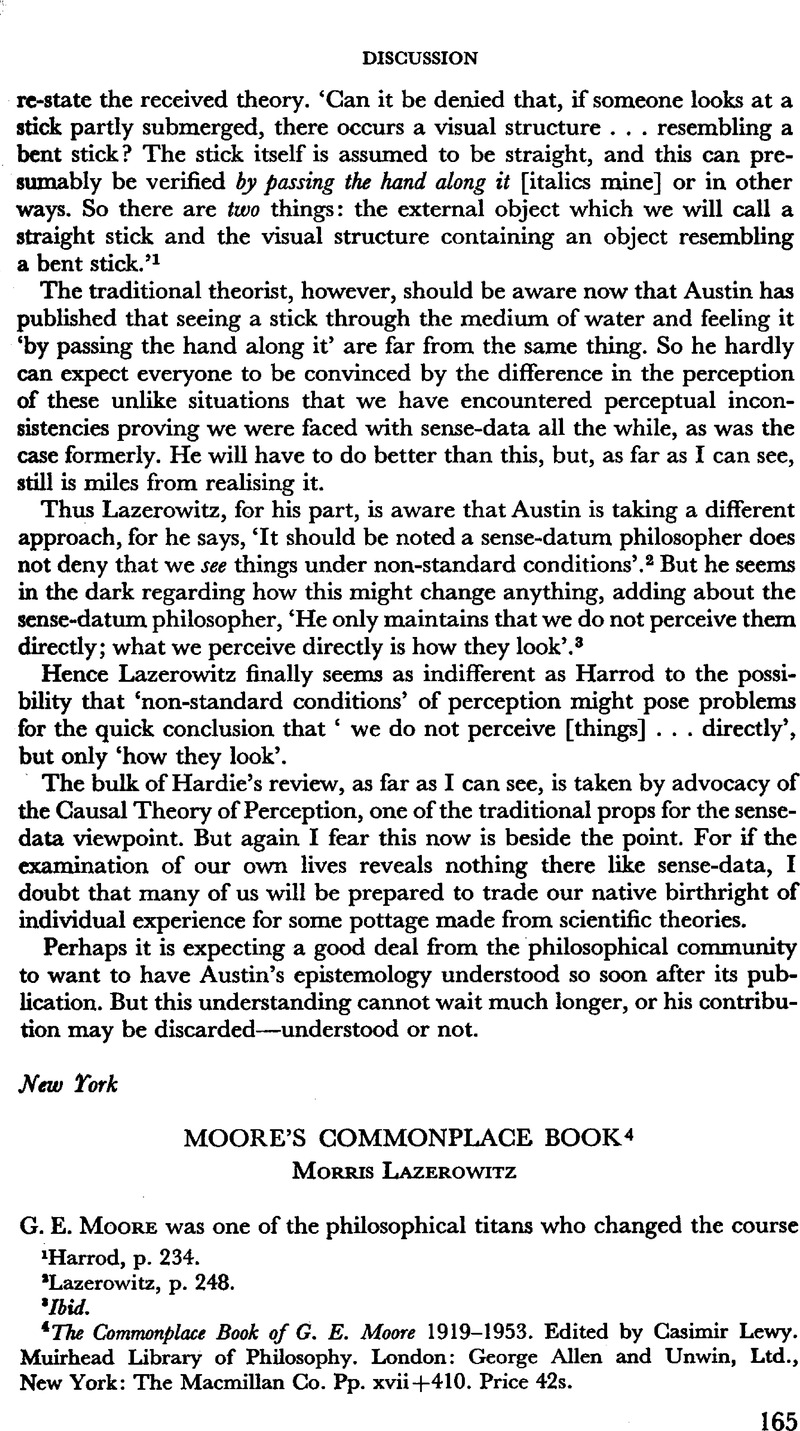No CrossRef data available.
Published online by Cambridge University Press: 25 February 2009

page 165 note 4 The Commonplace Book of G. E. Moore 1919-1953. Edited by Gasimir, Lewy. Muirhead Library of Philosophy. London: George Allen and Unwin, Ltd., New York: The Macmillan Co. Pp. xvii+410. Price 42s.Google Scholar
page 166 note 1 ‘George Edward Moore 1873-1958’, Proceedings of the British Academy, Vol. 67, p. 300.Google Scholar
page 166 note 1 Ibid., p. 301.
page 168 note 1 The first formula results from simple substitution on ‘q. ⊃.p ν q’ and the second, in Lewis' notation written ‘p. ≺.q ν ∼ q’, is argued for in Lewis and Langford's Symbolic Logic, p. 251.
page 168 note 2 Moore sometimes surprised his friends with the unexpected. Some of us who enjoyed musical sessions with him expected him to have a strong preference for Bach as against such romantics as Schumann and Hugo Wolf, but it was just the other way round.
page 170 note 1 It is interesting that in Some Main Problems of Philosophy, p. 38, Moore had said: ‘It seems very probable … that none of the sizes and shapes seen were the size or the shape of the real envelope’.Google Scholar
page 171 note 1 ‘A Defence of Common Sense’, Philosophical Papers, p. 56.Google Scholar
page 172 note 1 Language, Truth and Logic, 2nd edition, p. 88.Google Scholar
page 173 note 1 In one way or another the two so-called paradoxes of material implication, ‘q. ⊃.p ⊃ q’ and ‘ ∼ p.p ⊃ q’, tend to be represented as exhibiting astonishing properties of ‘if p, q’ rather than uninteresting properties of disjunction artificially freed from conditions of relevance.